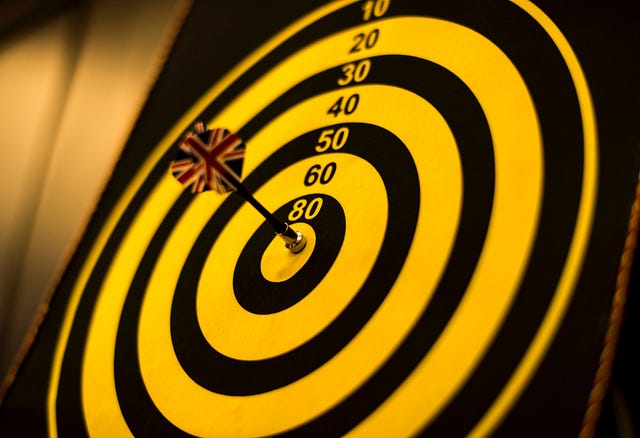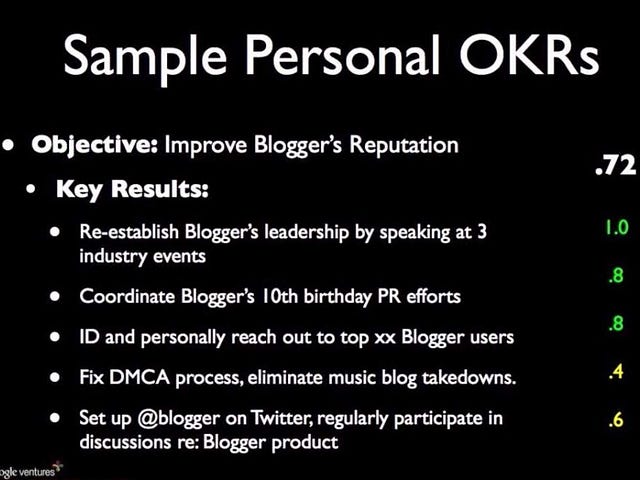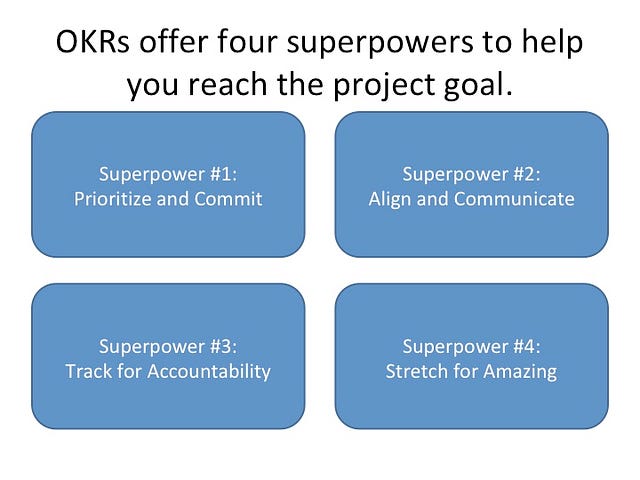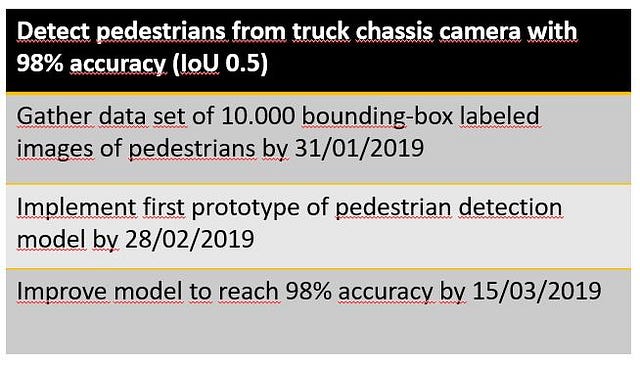Ready to learn Data Science? Browse Data Science Training and Certification courses developed by industry thought leaders and Experfy in Harvard Innovation Lab.
Use Google’s goal-setting method OKRs to set your Data Science project up for success
Google is well aware of the power of goal-setting. In 2004, early investor John Doerr introduced the young company to “Objectives and Key Results” (OKRs). What has followed is a miraculous tale of growth and innovation. Larry Page, Google’s long-time CEO, argues that OKRs had a substantial impact on the companies success. Google isn’t alone — Amazon, Zalando, and Intel use OKRs to this day.

Photo by Annie Spratt on Unsplash
First, this article explains how OKRs work. Second, it aims to convince Data Scientists to use OKRs to steer their projects. Often enough, Data Scientists drift into enduring research or optimizing less-valuable metrics. As a result, time and resources are wasted, which endanger a successful delivery. OKRs provide strategic guidance and measurability, which help you achieve your project goal.
The content is based on the book “Measure What Matters” by famous Venture Capitalist John Doerr and personal experience with OKRs. Let’s learn. 📗
The Power of Goal-Setting
“A goal properly set is halfway reached.” — Zig Ziglar
Goal-setting is arguably the most important step to start any project. While research isn’t clear on the benefits of proper goal-setting, we can deduct the advantages and disadvantages. If we fail to state a clear goal, co-workers cannot collaborate, actions are not aligned and we don’t know if we’ve reached the goal. In short, havoc looms.

Photo by Patrick Fore on Unsplash
Accordingly, every Data Science project aims to fulfill a goal. The breadth of goals might vary from researching a new model to creating a prototype for improving an existing system. Even so, accurate goal-setting is paramount for Data Science projects. Data Science projects are well-suited for accurate goal-setting because we can compare the results of our model with the required metric.
Let’s explore the Intel-pioneered and Google-perfected method for goal-setting — OKRs.
Objectives and Key Results
Objectives and Key Results is the method to transparently align and prioritize resources towards a common goal. The approach was established by Intel’s legendary CEO Andy Grove in the 1980’s. OKRs can be used on a company, team, project or personal level by both corporations and organizations. OKRs are widely used to align strategic initiatives across companies in Silicon Valley and Europe.

Photo by rawpixel on Unsplash
OKRs are set at the beginning of the project and define the end-goal. Find below an example of personal OKRs from Rick Klau, who worked at Blogger after they got acquired by Google:

You can see that Rick declared the Objective to be “Improve Blogger’s Reputation” along with measurable Key Results. At the end of each quarter, these Key Results are graded from 0 to 1.
Objectives are the “What”. What is the goal of the project? They…
- express goals and intents
- are aggressive yet realistic
- are tangible, objective and unambiguous. A rational observer can judge whether the objective was achieved or not
- provides clear value for the company when
Key Results are the “How”. How do we reach the project goal? They…
- express measurable milestones
- describe outcomes, not activities. “Consult” or “help” is a weak OKR. Focus on how this activity helps achieve an objective.
- include evidence of completion
OKR Superpowers
According to John Doerr, the OKR framework offers four distinct superpowers.

OKRs transparently align the work of employees towards a committedobjective. OKRs are measurable and are evaluated at the end of each quarter. OKRs are successful when 70% of the key results are achieved. This nudges employees to aim high.
Next, let’s explore how we can use the power of OKRs for Data Science projects.
Apply OKRs to your Data Science project
Andrew Ng, the famous AI-pioneer, teaches in his Deep Learning Specialization that every Data Science project should start with defining a measurable metric. The goal of the project is to fulfill this metric. This goal steers the actions of your project.

Photo by rawpixel on Unsplash
Metrics like accuracy, precision and recall, or F1-score are common Data Science metrics. Each metrics offers distinct advantages and disadvantages depending on your business case. Accuracy might not be the best metric when you have a highly imbalanced dataset. Would you compare your algorithm to Human-level performance? How important is detection speed?
Pick the most meaningful metric to define whether you’ve solved the business case or not. Analyzing the pros and cons of each metric is beyond the scope of this article, but you can read more about it here. Defining the key metric will prevent you from doing research while you should create a prototype or continuing to solve an issue when the metric has been already been reached.
After defining the key metric, we are closer to defining our Data Science OKRs. In many projects, it makes sense that the key metric is a part of the Objective. It shows where we want to go. Next, we need to define Key Results to display how to reach the goal.
Let’s say you’re working in the automotive industry. You identify the need to detect pedestrians in an urban surrounding to warn truck drivers. You decide to develop a driver-assistance function for trucks to identify pedestrians accurately. The truck chassis shakes heavily, hence general pedestrian detection models don’t work well enough. The team agrees that a 98% detection rate is a proper stretch-goal for the first quarter.
Next, you decide that you need a data set with at least 10.000 labeled images. You will need time to do research and to implement a first prototype. Lastly, you need time and resources to iterate until you reach the goal. Let’s transform the information into OKRs.

These OKRs guide your work on the pedestrian detection project in the next quarter. You review your OKRs at the end. Did you manage to achieve your key results? If you missed them, how so?
Applying the OKR method to your Data Science project will keep you on track for successful project delivery.
Key Takeaways
- OKRs allow you to align and prioritize your work, set stretch-goals and track your progress
- Start every Data Science project by setting the correct metric and OKRs
- Continuously measure your progress towards reaching the OKRs
Every Data Science project is different. However, all projects start with setting a goal. Set your Data Science project up for success through using OKRs. 🎯



